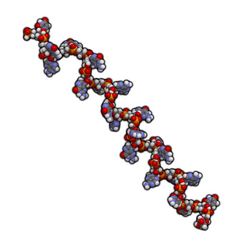MicroRNAs in the retina
Visual processing in vertebrates is a complex process that requires many cell types. Bipolar cells constitute intermediates in the process, and lie post-synaptic to photoreceptors and presynaptic to ganglion cells. They process and transmit the light signal received from rods and cones. Accumulating evidence underscores the importance of functional microRNA expression in mature cone photoreceptors. The primary objective of the EU-funded RBC MIRNA (The role of microRNAs in the retinal bipolar cell) project was to investigate the role of microRNAs in bipolar cells. For this purpose, scientists focused on the ON-bipolar-cell-specific TrpM1 gene, which depolarises ON responses in bipolar cells. Furthermore, they investigated its interaction with microRNA miR-211. Results indicated an enriched expression of miR-211 in the retina's bipolar cell layer in response to light changes. To delineate this effect further, researchers created transgenic mice lacking an essential factor in the biogenesis of mature microRNAs in their bipolar cells. However, the morphology of the retina, the levels of essential retinal proteins and the visual function remained unaltered. This suggests that alternative pathways were in place for the production of miRNA in the retina. Downregulation of the RNAse III enzyme Dicer, which is essential for all microRNA production, again did not change the visual function of the transgenic mice. Nonetheless, molecular analysis of the retinal bipolar cells in these animals revealed a reduction in the synaptic proteins SNAP-25 (Synaptosomal-Associated Protein, 25kDa) and the synaptotagmin Syt1-1. Collectively, these results suggest a possible deregulation of synaptic turnover at the synapses of bipolar cells because of disrupted miRNA biogenesis. Understanding synaptic transmission fine-tuning involved in visual processing could prove beneficial for the treatment of various eye conditions.







